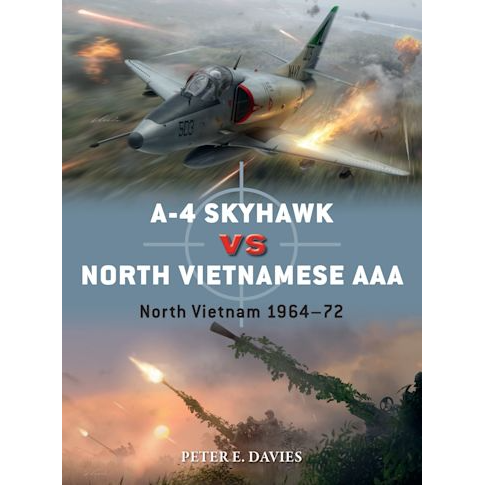GamesandStuff.com
A-4 SKYHAWK VS NORTH VIETNAMESE AAA NORTH VIETNAM 1964-72
A-4 SKYHAWK VS NORTH VIETNAMESE AAA NORTH VIETNAM 1964-72
Couldn't load pickup availability
An exploration and analysis of the tactics, equipment, and effectiveness of the Douglas A-4 Skyhawk, the US Navy's primary strike weapon during the war in Vietnam, and its main adversary--North Vietnam's antiaircraft artillery network.
While the F105 Thunderchief was the USAF's principal strike weapon during the Rolling Thunder campaign, the US Navy relied on the Douglas A-4 Skyhawk for the majority of its strikes on North Vietnam. First flown in 1954, the Skyhawk entered service in 1956 and remained in continuous production for 26 years. Throughout Operation Rolling Thunder it was the US Navy's principal daytime light strike bomber, remaining in use after its replacement, the more sophisticated A-7 Corsair II, began to appear in December 1967.
During the 1965--68 Rolling Thunder period, up to five attack carriers regularly launched A-4 strike formations against North Vietnam. These formations faced an ever-expanding and increasingly coordinated Soviet-style network of antiaircraft artillery missiles and fighters. Skyhawk pilots were often given the hazardous task of attacking anti-aircraft defenses and to improve accuracy, they initially dropped ordnance below 3000 ft in a 30-degree dive in order to bomb visually below the persistent low cloud over North Vietnam, putting the aircraft within range of small-arms fire.
This illustrated title examines both the A-4 Skyhawk and the Vietnamese AAA defenses in context, exploring their history and analyzing their tactics and effectiveness during the conflict.


